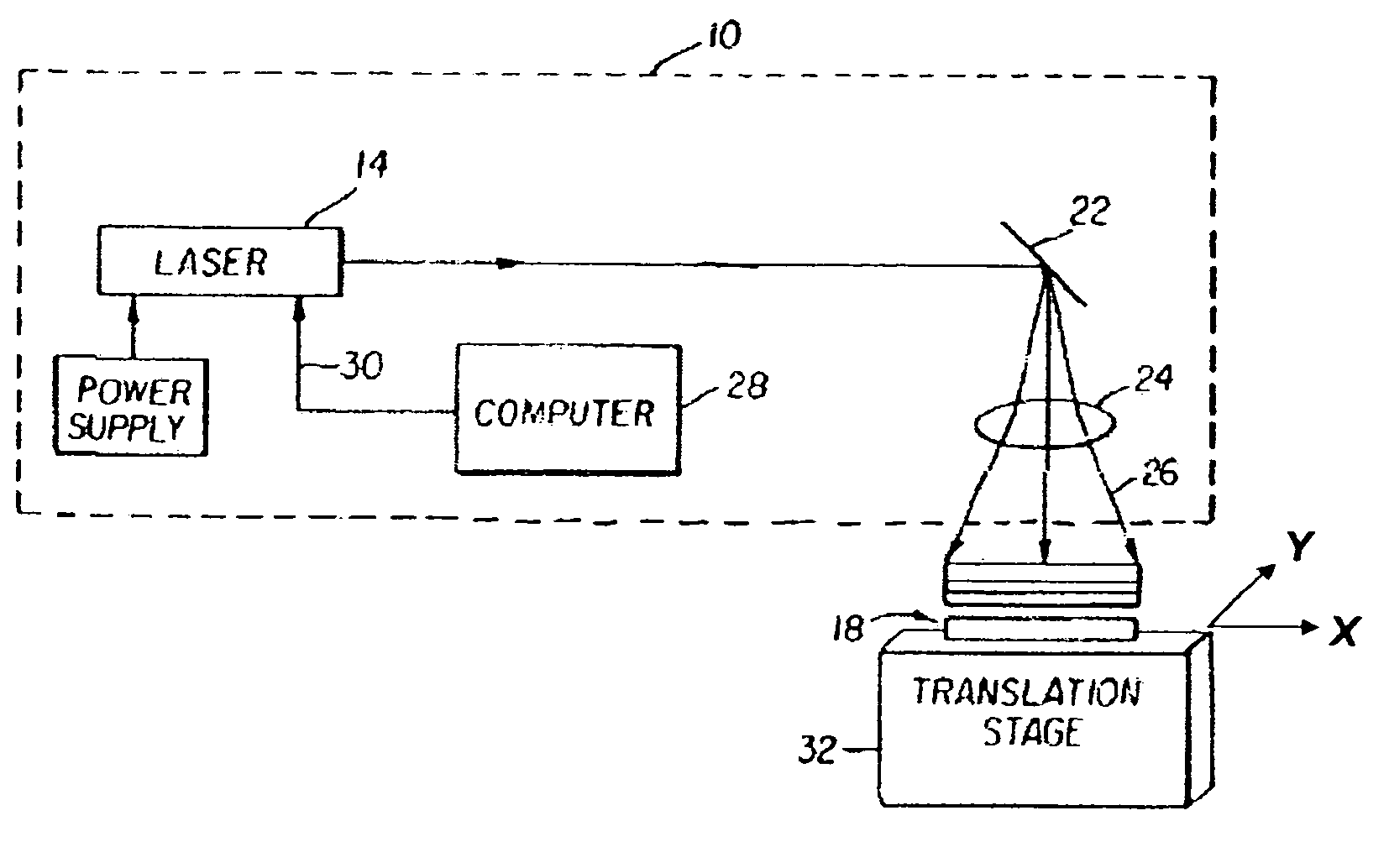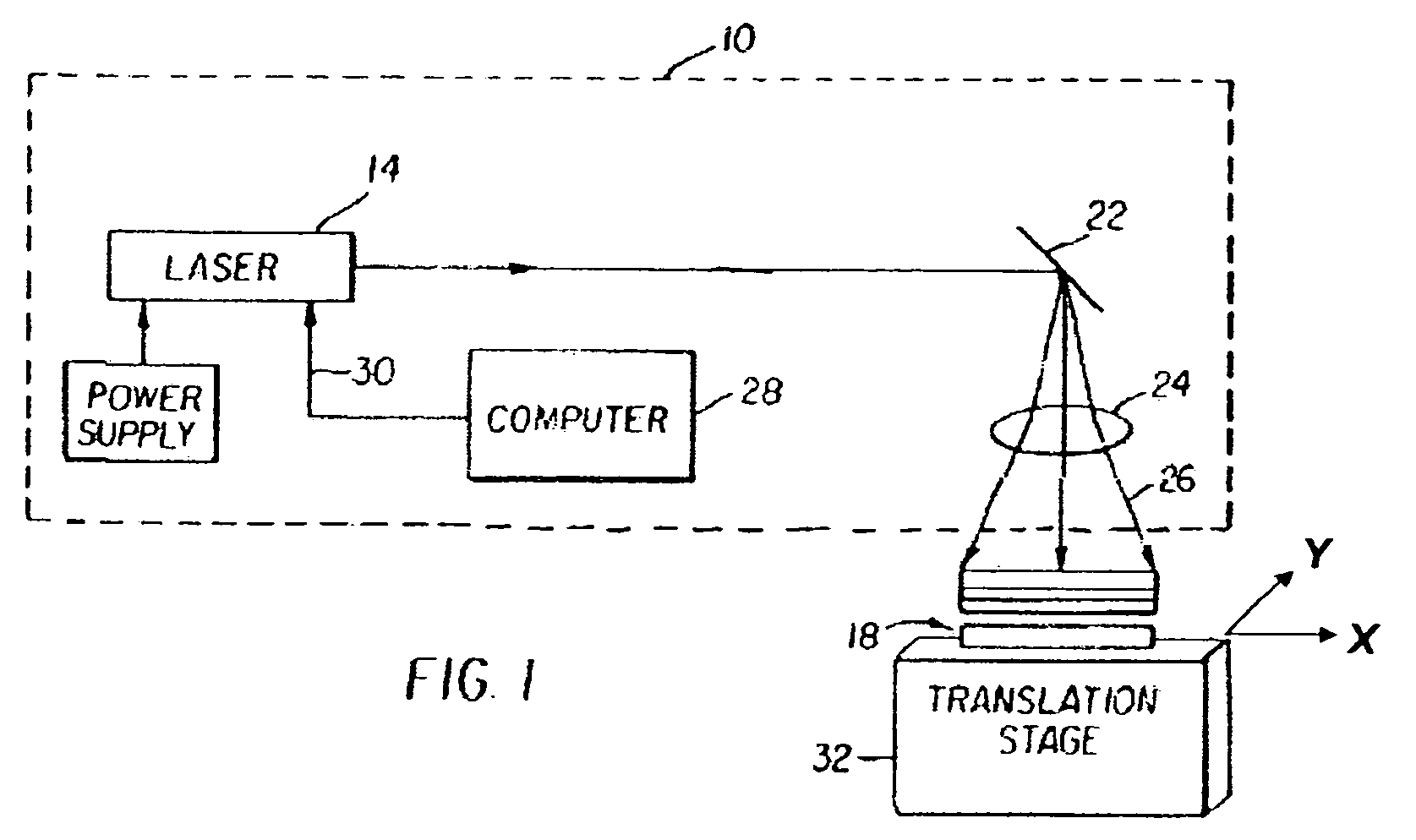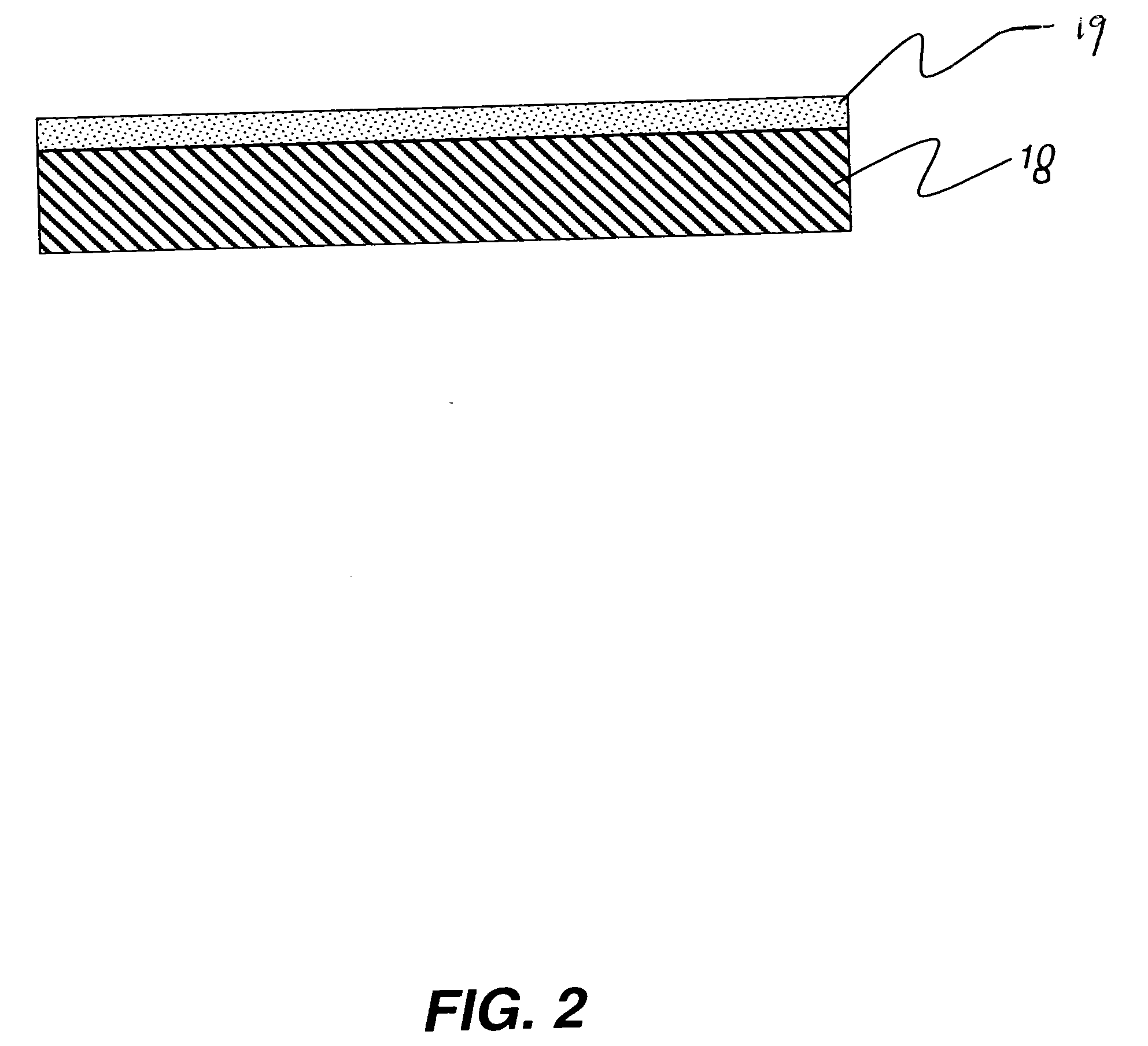Forming electrical conductors on a substrate
a technology of electrical conductors and substrates, applied in the direction of dielectric characteristics, light absorption dielectrics, instruments, etc., can solve the problems of substrate deformation, high cost, and difficult to achieve lateral dimensions less than 100 microns,
- Summary
- Abstract
- Description
- Claims
- Application Information
AI Technical Summary
Benefits of technology
Problems solved by technology
Method used
Image
Examples
Embodiment Construction
[0015] One of most characteristic feature of metal nanoparticles is the size-dependent surface melting point depression. (Ph. Buffat et al.; “Size effect on the melting temperature of gold particles” Physical Review A, Volume 13, Number 6, June 1976, pages 2287-2297; A. N. Goldstein et al.; “Melting in Semiconductor Nanocrystals” Science, Volume 256, Jun. 5, 1992, pages 1425-1427; and K. K. Nanda et al.; “Liquid-drop model for the size-dependent melting of low-dimensional systems” Physical Review, A 66 (2002), pages 013208-1 thru 013208-8.) This property would enable the melting or sintering of the metal nanoparticles into polycrystalline films with good electric conductivity. (D. Huang, et al.; “Plastic-Compatible Low Resistance Printable Gold Nanoparticle Conductors for Flexible Electronic” Journal of the Electrochemical Society, Volume 150, Issue 7, July 2003, Abstract.) The present invention will be directed to a method of forming a pattern of electrical conductors on a substrat...
PUM
| Property | Measurement | Unit |
|---|---|---|
| temperature | aaaaa | aaaaa |
| temperature | aaaaa | aaaaa |
| thickness | aaaaa | aaaaa |
Abstract
Description
Claims
Application Information
 Login to View More
Login to View More - R&D
- Intellectual Property
- Life Sciences
- Materials
- Tech Scout
- Unparalleled Data Quality
- Higher Quality Content
- 60% Fewer Hallucinations
Browse by: Latest US Patents, China's latest patents, Technical Efficacy Thesaurus, Application Domain, Technology Topic, Popular Technical Reports.
© 2025 PatSnap. All rights reserved.Legal|Privacy policy|Modern Slavery Act Transparency Statement|Sitemap|About US| Contact US: help@patsnap.com



